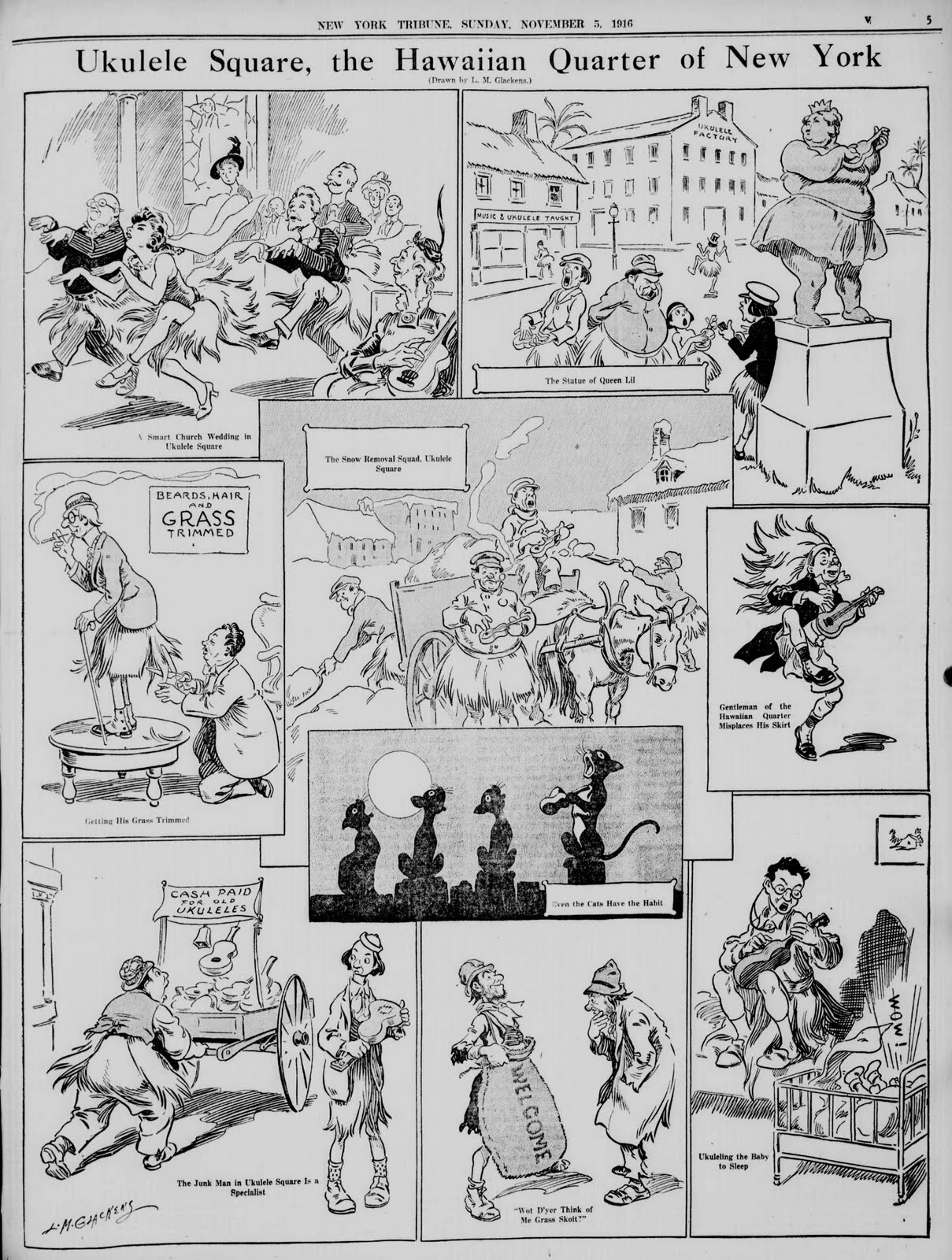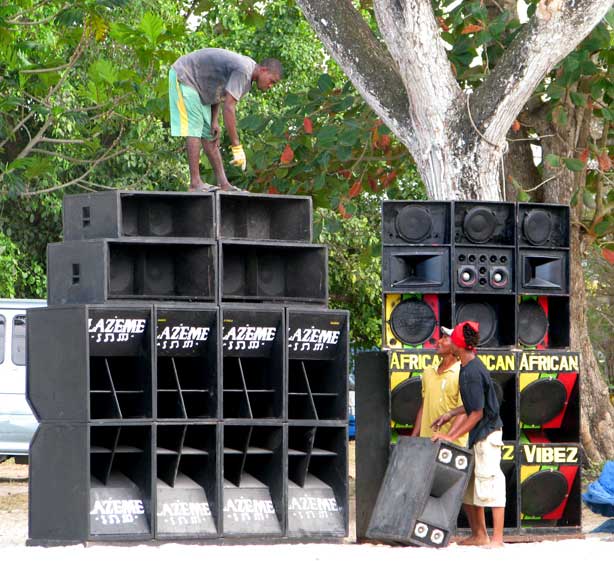|
Ukelin
The ukelin is a bowed psaltery with zither strings made popular in the 1920s. It is meant to be a combination of the violin and the Hawaiian ukulele. It lost popularity prior to the 1970s because the instrument was difficult to play and often returned to the manufacturer before it had been completely paid for. History The history of the ukelin is hard to trace, since there were several instruments resembling the ukelin that were produced in the 1920s. Paul F. Richter filed the first known ukelin patent in December 1924, it was granted in April 1926. The Phonoharp Company, which merged with Oscar Schmidt, Inc. the same year, began producing ukelins in 1926. However, an instrument greatly resembling the ukelin had had its patent filed in 1923, a year before Richter filed his; yet the patent, filed by John Large, was not granted until after Richter's patent had already been given. Another similar instrument had a patent filed by Walter Schmidt in 1925. Because of these patents file ... [...More Info...] [...Related Items...] OR: [Wikipedia] [Google] [Baidu] |
Bowed Psaltery
The bowed psaltery is a type of psaltery or zither that is played with a bow. In contrast with the centuries-old plucked psaltery, the bowed psaltery appears to be a 20th-century invention. History Violin zither In 1925 a German patent was issued to the Clemens Neuber Company for a bowed psaltery which also included a set of strings arranged in chords, so that one could play the melody on the bowed psaltery strings, and strum accompaniment with the other hand. These are usually called "violin zithers". Ukelin-type instruments Similar instruments were being produced by American companies of the same time period, often with Hawaiian-inspired names, such as ''Hawaiian Art Violin'' or ''Violin-Uke'', and marketed for use in playing the Hawaiian music, which was popular in the United States in the 1920s. These instruments are not typically referred to as psalteries, but by the various trade names they were sold under, such as ''Ukelin''. The conventional bowed psaltery Today, the ... [...More Info...] [...Related Items...] OR: [Wikipedia] [Google] [Baidu] |
Ukulele
The ukulele ( ; from haw, ukulele , approximately ), also called Uke, is a member of the lute family of instruments of Portuguese origin and popularized in Hawaii. It generally employs four nylon strings. The tone and volume of the instrument vary with size and construction. Ukuleles commonly come in four sizes: soprano, concert, tenor, and baritone. History Developed in the 1880s, the ukulele is based on several small, guitar-like instruments of Portuguese origin, the ''machete'', '' cavaquinho'', ''timple'', and ''rajão'', introduced to the Hawaiian Islands by Portuguese immigrants from Madeira, the Azores and Cape Verde. Three immigrants in particular, Madeiran cabinet makers Manuel Nunes, José do Espírito Santo, and Augusto Dias, are generally credited as the first ukulele makers. Two weeks after they disembarked from the SS ''Ravenscrag'' in late August 1879, the ''Hawaiian Gazette'' reported that "Madeira Islanders recently arrived here, have been delighting the ... [...More Info...] [...Related Items...] OR: [Wikipedia] [Google] [Baidu] |
Zither
Zithers (; , from the Greek word ''cithara'') are a class of stringed instruments. Historically, the name has been applied to any instrument of the psaltery family, or to an instrument consisting of many strings stretched across a thin, flat body. This article describes the latter variety. Zithers are typically played by strumming or plucking the strings with the fingers or a plectrum. In the Hornbostel–Sachs classification system, the term refers to a larger family of similarly shaped instruments that also includes the hammered dulcimer family and piano and a few rare bowed instruments like the bowed psaltery, bowed dulcimer, and streichmelodion. Like an acoustic guitar or lute, a zither's body serves as a resonating chamber (sound box), but, unlike guitars and lutes, a zither lacks a distinctly separate neck assembly. The number of strings varies, from one to more than fifty. In modern common usage the term "zither" refers to three specific instruments: the concert zithe ... [...More Info...] [...Related Items...] OR: [Wikipedia] [Google] [Baidu] |
Violin
The violin, sometimes known as a ''fiddle'', is a wooden chordophone (string instrument) in the violin family. Most violins have a hollow wooden body. It is the smallest and thus highest-pitched instrument (soprano) in the family in regular use. The violin typically has four strings (music), strings (some can have five-string violin, five), usually tuned in perfect fifths with notes G3, D4, A4, E5, and is most commonly played by drawing a bow (music), bow across its strings. It can also be played by plucking the strings with the fingers (pizzicato) and, in specialized cases, by striking the strings with the wooden side of the bow (col legno). Violins are important instruments in a wide variety of musical genres. They are most prominent in the Western classical music, Western classical tradition, both in ensembles (from chamber music to orchestras) and as solo instruments. Violins are also important in many varieties of folk music, including country music, bluegrass music, and ... [...More Info...] [...Related Items...] OR: [Wikipedia] [Google] [Baidu] |
Henry Charles Marx
Henry Charles Marx (1875–1947) was the American inventor of numerous musical instruments, most notably the marxophone The Marxophone is a fretless zither played via a system of metal hammers. It features two octaves of double melody strings in the key of C major ( middle C to C''), and four sets of chord strings (C major, G major, F major, and D7). Sounding s ... and the marxolin. References {{DEFAULTSORT:Marx, Henry Charles Inventors of musical instruments American inventors 1875 births 1947 deaths ... [...More Info...] [...Related Items...] OR: [Wikipedia] [Google] [Baidu] |
Great Depression
The Great Depression (19291939) was an economic shock that impacted most countries across the world. It was a period of economic depression that became evident after a major fall in stock prices in the United States. The economic contagion began around September and led to the Wall Street stock market crash of October 24 (Black Thursday). It was the longest, deepest, and most widespread depression of the 20th century. Between 1929 and 1932, worldwide gross domestic product (GDP) fell by an estimated 15%. By comparison, worldwide GDP fell by less than 1% from 2008 to 2009 during the Great Recession. Some economies started to recover by the mid-1930s. However, in many countries, the negative effects of the Great Depression lasted until the beginning of World War II. Devastating effects were seen in both rich and poor countries with falling personal income, prices, tax revenues, and profits. International trade fell by more than 50%, unemployment in the U.S. rose to 23% and ... [...More Info...] [...Related Items...] OR: [Wikipedia] [Google] [Baidu] |
Melody
A melody (from Greek language, Greek μελῳδία, ''melōidía'', "singing, chanting"), also tune, voice or line, is a Linearity#Music, linear succession of musical tones that the listener perceives as a single entity. In its most literal sense, a melody is a combination of pitch (music), pitch and rhythm, while more figuratively, the term can include other musical elements such as Timbre, tonal color. It is the foreground to the background accompaniment. A line or part (music), part need not be a foreground melody. Melodies often consist of one or more musical Phrase (music), phrases or Motif (music), motifs, and are usually repeated throughout a musical composition, composition in various forms. Melodies may also be described by their melodic motion or the pitches or the interval (music), intervals between pitches (predominantly steps and skips, conjunct or disjunct or with further restrictions), pitch range, tension (music), tension and release, continuity and coheren ... [...More Info...] [...Related Items...] OR: [Wikipedia] [Google] [Baidu] |
Bass (sound)
Bass ( ) (also called bottom end) describes tones of low (also called "deep") frequency, pitch and range from 16 to 256 Hz (C0 to middle C4) and bass instruments that produce tones in the low-pitched range C2-C4. They belong to different families of instruments and can cover a wide range of musical roles. Since producing low pitches usually requires a long air column or string, and for stringed instruments, a large hollow body, the string and wind bass instruments are usually the largest instruments in their families or instrument classes. Use in composition In musical compositions, such as songs and pieces, these are the lowest-pitched parts of the harmony. In choral music without instrumental accompaniment, the bass is supplied by adult male bass singers. For an accompanied choir, the bass is typically provided by pipe organ or piano (or if a choir can afford to hire one, by orchestra). In an orchestra, the basslines are played by the double bass and cellos, bassoon o ... [...More Info...] [...Related Items...] OR: [Wikipedia] [Google] [Baidu] |
C Major
C major (or the key of C) is a major scale based on C, consisting of the pitches C, D, E, F, G, A, and B. C major is one of the most common keys used in music. Its key signature has no flats or sharps. Its relative minor is A minor and its parallel minor is C minor. The C major scale is: : On the piano, the C major scale can be played by playing only the white keys starting on C. Compositions Twenty of Joseph Haydn's 106 symphonies are in C major, making it his second most-used key, second to D major. Of the 134 symphonies mistakenly attributed to Haydn that H. C. Robbins Landon lists in his catalog, 33 are in C major, more than any other key. Before the invention of the valves, Haydn did not write trumpet and timpani parts in his symphonies, except those in C major. Landon writes that it wasn't "until 1774 that Haydn uses trumpets and timpani in a key other than C major... and then only sparingly." Most of Haydn's symphonies in C major are labelled "festive" an ... [...More Info...] [...Related Items...] OR: [Wikipedia] [Google] [Baidu] |
Chromatic
Diatonic and chromatic are terms in music theory that are most often used to characterize scales, and are also applied to musical instruments, intervals, chords, notes, musical styles, and kinds of harmony. They are very often used as a pair, especially when applied to contrasting features of the common practice music of the period 1600–1900. These terms may mean different things in different contexts. Very often, ''diatonic'' refers to musical elements derived from the modes and transpositions of the "white note scale" C–D–E–F–G–A–B. In some usages it includes all forms of heptatonic scale that are in common use in Western music (the major, and all forms of the minor). ''Chromatic'' most often refers to structures derived from the twelve-note chromatic scale, which consists of all semitones. Historically, however, it had other senses, referring in Ancient Greek music theory to a particular tuning of the tetrachord, and to a rhythmic notational convention in me ... [...More Info...] [...Related Items...] OR: [Wikipedia] [Google] [Baidu] |
Tabulature
Tablature (or tabulature, or tab for short) is a form of musical notation indicating instrument fingering rather than musical pitches. Tablature is common for fretted stringed instruments such as the guitar, lute or vihuela, as well as many free reed aerophones such as the harmonica. Tablature was common during the Renaissance and Baroque eras, and is commonly used today in notating many forms of music. Three types of organ tablature were used in Europe: German, Spanish and Italian. To distinguish standard musical notation from tablature, the former is usually called "staff notation" or just "notation". Etymology The word ''tablature'' originates from the Latin word ''tabulatura''. ''Tabula'' is a table or slate, in Latin. To tabulate something means to put it into a table or chart. Origin The first known occurrence in Europe is around 1300, and was first used for notating music for the organ. Concepts While standard notation represents the rhythm and duration of eac ... [...More Info...] [...Related Items...] OR: [Wikipedia] [Google] [Baidu] |








